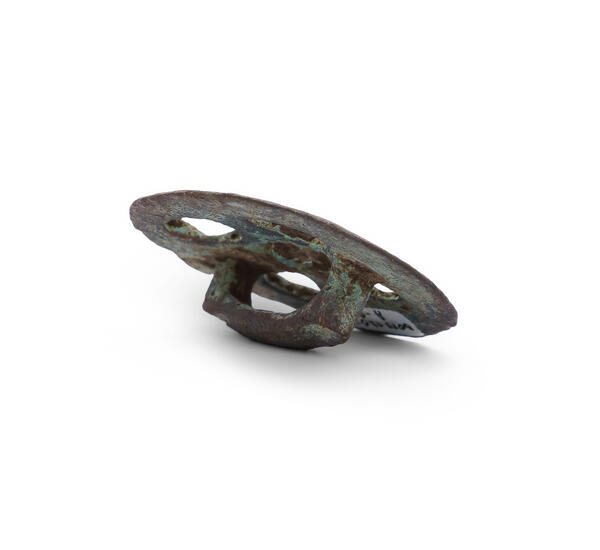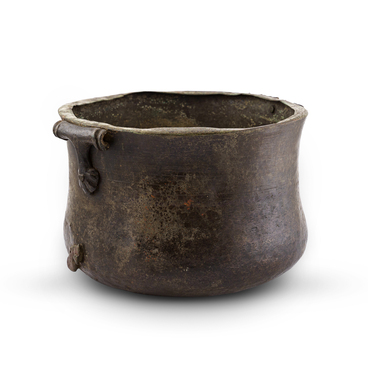This bronze plaque with slots is part of the Podgorensky hoard. It dates from the period between the 8th and 7th centuries BCE. The plaque and the hoard were accidental discoveries made by a local resident in 2016 and were not the result of archaeological excavations. In total, the hoard consisted of 11 items, which included objects from different cultures and time periods.
According to their practical purpose, the items in the Podgorensky hoard can be divided into two categories: components of a horse harness and weapons. The first category includes cheekpieces, which are a pair of rods from a bridle, bronze plaques with slots, and bracelet-shaped rings. The second category encompasses a cast bronze double-edged celt ax with a socket at the butt.
In general, this hoard, judging by the items, appears to be closely related to the Pre-Scythian burial sites that were discovered near the villages of Butenka and Kvitka in Ukraine. With a high degree of certainty, it can be associated with the period between 714 and 700 BCE. Although most of the artifacts can be dated to the 9th century BCE, such as the spear and celt ax, the presence of bracelet-like rings and chariot parts inclines researchers towards the aforementioned period.
It is probable that the population that deposited the hoard entered the territory of the Middle Don region from the steppes between the Dnieper and Ciscaucasia, which is the area where the Cimmerian culture formed in the 9th century BCE as evidenced by various finds associated with the proto-Maeotian, Belozerka, and Novocherkassk cultures.
Within the territory of the Don region, 18 burial sites and accidental finds dating to this period have been discovered. The analysis of these finds led the Russian archaeologist Alexander Pavlovich Medvedev to propose the existence of two distinct groups of monuments in the forest-steppe area left in the transitional period. The first group, as suggested by the researcher, was left by descendants of the local population — representatives of the Srubnaya culture — and those who came to this area later. The second group, on the other hand, exhibited features similar to those found in Novocherkassk. Like the hoard, this group of monuments from the Don region may have been left behind after West Asian campaigns.




